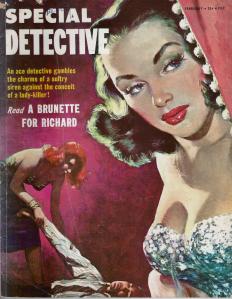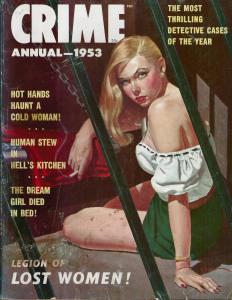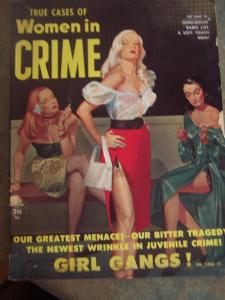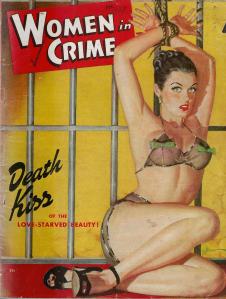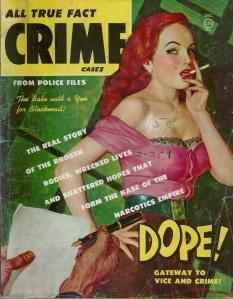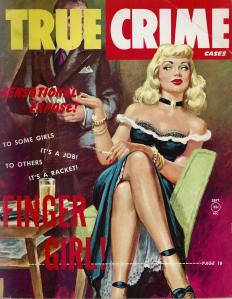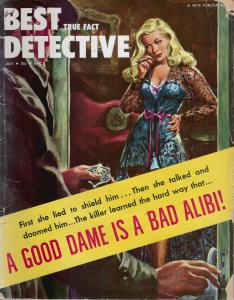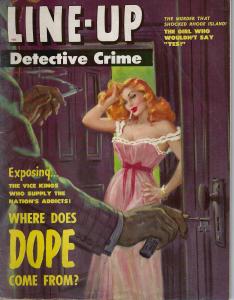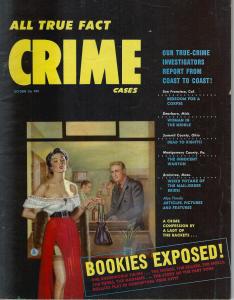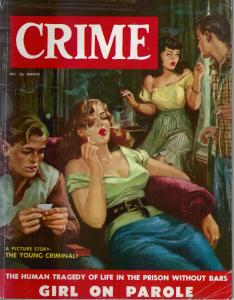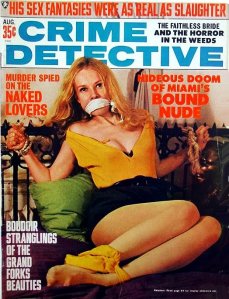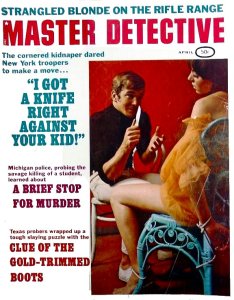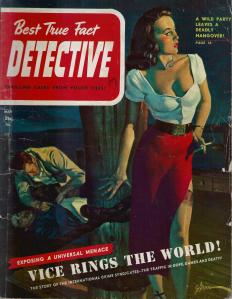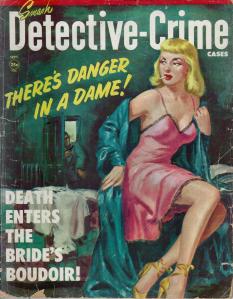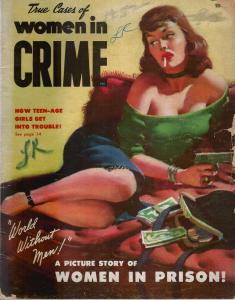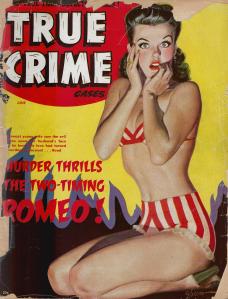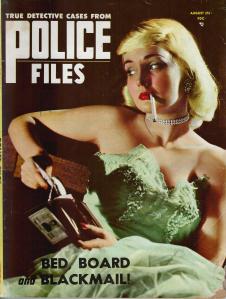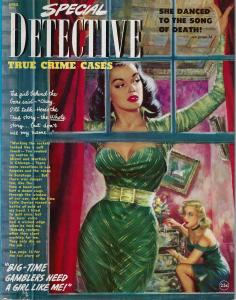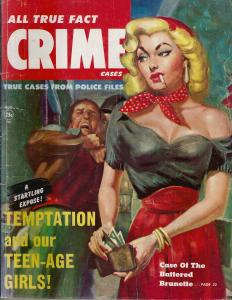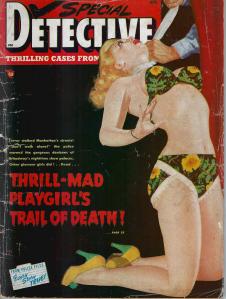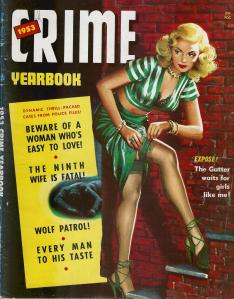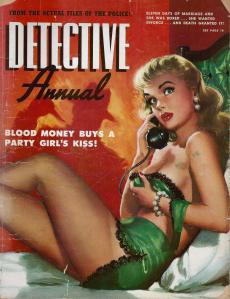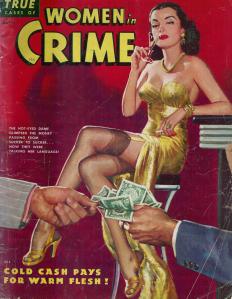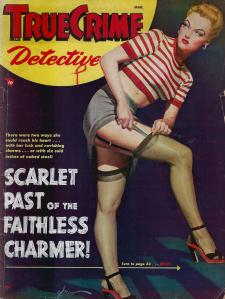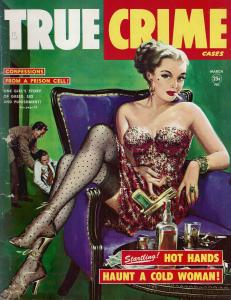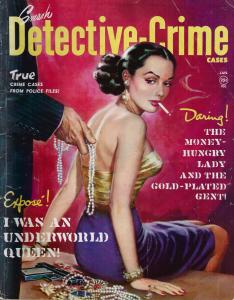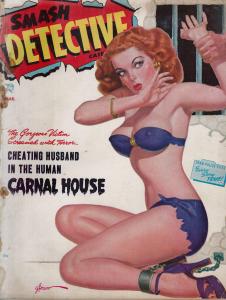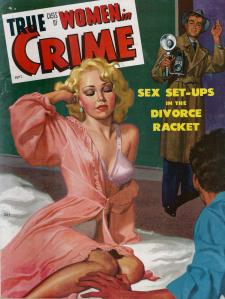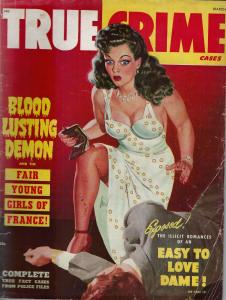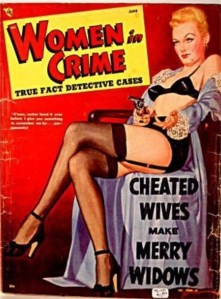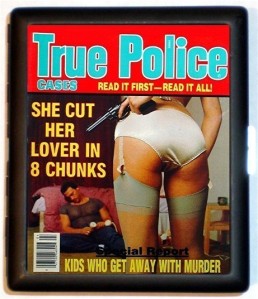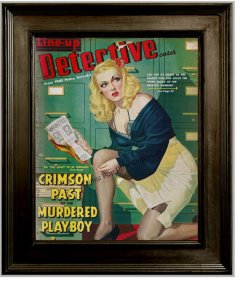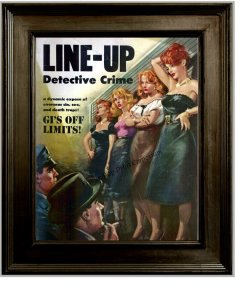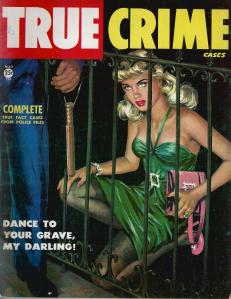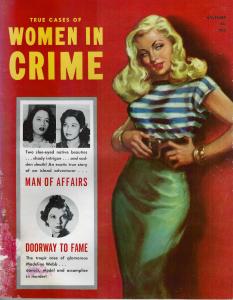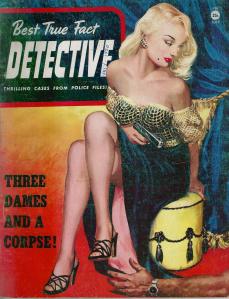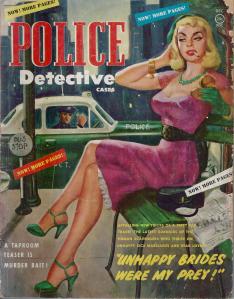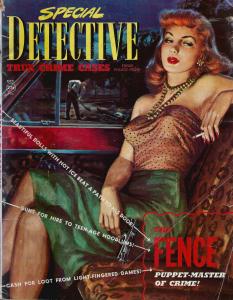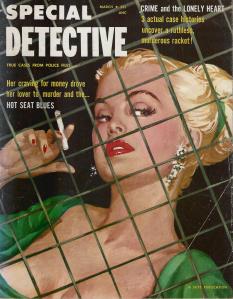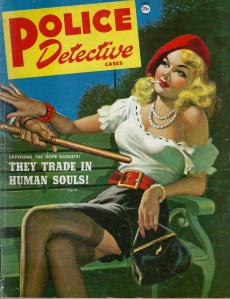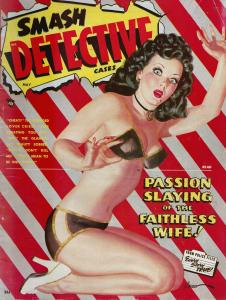A Guide to Vintage Detective Magazine Collecting
1. VINTAGE DETECTIVE & CRIME MAGAZINE BASICS:
Collecting Vintage detective and police magazines from the 1950's can be very fun and rewarding. Lots of time can be spent reading the various articles and admiring the striking covers and interior art. These vintage magazines are eye candy to anyone who enjoys pin up art and a vintage graphic look. Lurid colorful painted cover art and kitschy taglines and blurbs make the covers of these vintage detective magazines pop out. No one who sees these can't help but take a second glance at them. The quality of the illustration paintings are some of the best ever produced.
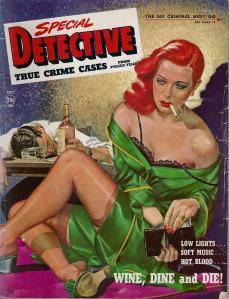

Articles of the crimes of the day are always interesting from a cultural perspective and also as a snapshot into a time and place in American history. Most collectors usually obsess over the cover art. Like collecting vintage paperbacks as a hobby, vintage magazine collectors try to get magazines with the best cover art and titles/blurbs. Some collect complete runs of a magazine title while others collect magazines by the artist who did their cover illustrations. Others will collect magazines by their interior topics like "drug themes" or "prostitution themes". I tend to collect the items I personally like and cover art is a big thing for myself.
2. COVER ARTISTS:
Artists like George Gross, Howell Dodd, Al Brule, and Peter Driben did plenty of detective magazine covers with George Gross and Howell Dodd being two of the very best at these covers. They also did a lot of interior illustrations for these magazines.These artists also did cover art for the "sexy digests" of the era as well as paperback book covers and girlie magazines. Many of the covers are unsigned and can be difficult to attribute to. Learning about these artists is interesting in itself. Many of the original magazines cover art is long gone-destroyed. However, sometimes original art does show up by these artists. Here is an example of an
original cover for a sexy digest from 1951 for sale on ebay by Howell Dodd. It shows a classic painting of a woman ready to seduce a man who is in the background pouring a drink and smoking a cigarette.
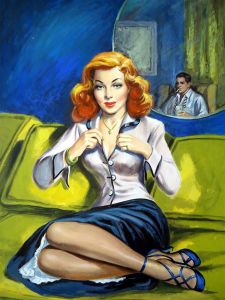
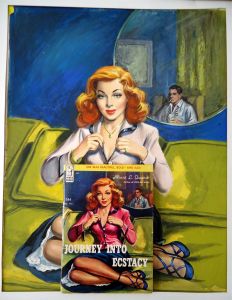
Ebay is a great place to find these original paintings as well as sites like
Heritage Auctions and
Sothebys. Original art is very RARE and will always be a bit pricey.
3. COVER ART PERIODS
The time period of about 1948 to 1956 seem to be where the very best of what I deem the best "classic art" covers of these magazines were from. 1951 seems to me to be the high point for the type of art I deem the "most classic". This is a period I deem to be where the artwork on these magazines seem to be in sync with each other in terms of style. I surmise this "classic art" era from years of collecting these magazines. A typical example of this "classic art" era is True Crime Cases Magazine from September, 1951.
"FINGER GIRL: To some girls it's a job, to others it's a racket!"
The artwork from this era is classic usually showing a sexy seductive woman in a sexy tight colorful outfit wearing high heels and in a setting where booze, smoking, and a hint of a bedroom is nearby. Because these are detective magazines, there is a hint of some sort of mystery, crime, or other vice happening.
The cover blurbs as well as the graphics, in terms of text layout and fonts used, are fun and catchy. The colors pop! Where does dope come from? A good dame is a bad alibi! Girl on parole!
These covers are lurid, trashy, and kitschy. They promised a magazine with the kind of trashy crime reading that would tantalize and excite. Femme Fatals and "Bad Girls" were the thing here! Exposes, corruption, tragedies, and reform school girls!
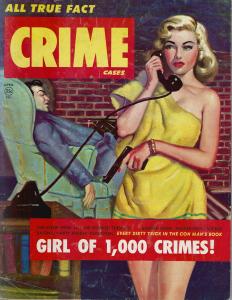
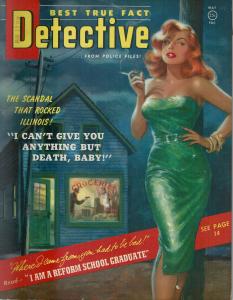
Prior to this era, the artwork was much more toned down and not as lurid or as colorful, though there are exceptions. The 1930's and 1940's cover art on Detective Magazines have a similar kind of look and I think cover artists seemed to follow each other in their "look". A typical example of this type of artwork is Real Detective Magazine from June, 1942. The cover shows a beautiful brunette cowering in fear against a plain blue background. While the art is decent, it is not as realistic, "tight", or as lurid as the "Classic era". The have a pulp feel to them. The Real Detective Magazine and Headquarters Detective magazine covers are unsigned but mimic a lower quality type of art, that is very distinctive and fine in it's own right, but not that great in terms of execution, that Artist Peter Driben made famous.
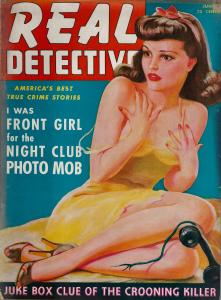
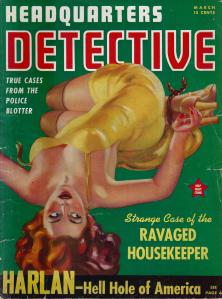
Peter Driben did cover art that was a step up from this and his style seemed to reign on the Gossip/Girlie magazines of the day which included magazines like "Eyeful", "Wink", "Beauty Parade", and others. Examples of Peter Driben Detective Magazine covers, both from 1942, are shown on Expose Detective True Crime Cases Magazine. These show creative backgrounds and setups and are "tighter" in terms of art.
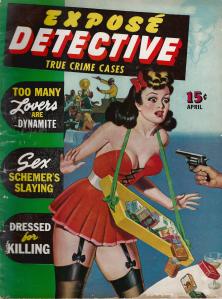
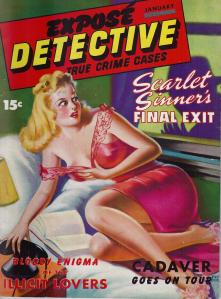
The painted cover art that shows up in the period after this time frame, tends to change to a slightly more toned down color palate with a look that is more illustration as opposed to paintings. The backgrounds were also back to the solid colors of the earlier eras. The magazine called "Master Detective" is a clear example of this type of change in cover art style used. The fonts used were simple. It is very good and distinctive but lacks that lurid quality of what I deem the "classic era" of Detective Magazine art. Examples of this is shown on Master Detective Magazine from September, 1958 and True Detective Magazine from 1956.

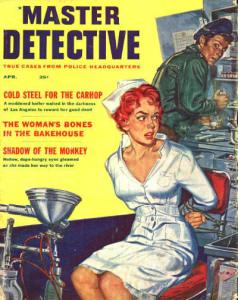
By 1957, many detective magazine covers seemed to switch over to photo covers with carefully posed crime scenes or actual crime photos. The fonts used are more simplistic and the covers usually are packed with blurbs.
Thus, began the end of illustration cover art for these magazines. With photo covers being so much cheaper to do and faster to accomplish, by the 1960's hardly any Detective magazines had illustration cover art. These photo cover magazines are still fun to collect though. They have very sexy women covers usually in "lady in peril" poses. Smoking was a trait of "bad women" in the 1950's and cover artists usually played this up a lot! You will usually see a cigarette in their hands or in their mouths.
4. WHERE TO COLLECT THESE ITEMS:
Collecting these magazines can be had by searching local used bookstores and used magazine stores. Antique stores, garage sales, and relative's "trash" can turn up some interesting finds. However, the main place to buy these magazines is on
ebay. There is a special
ebay category for crime/detective magazines under the magazine back issues category under "True Crime" . ABE.com, a
rare book search engine can also turn up some good finds at times. These magazines usually range in the $20 to $40 range for copies in VG condition.
These magazines are a lot rarer than a lot of collecting due to the nature of people throwing away magazines after a read. Finder decent conditions can be a challenge and there are no comprehensive books that list every publisher or title or show every cover.
5. BOOKS ON THE SUBJECT:
There is only one readily available book that discusses these magazines. It has plenty of illustrations of these magazines and good text about the subject. It was put out by Taschen and well worth the money:
True Crime Detective Magazines by Eric Godtland. Because this field of collecting is relatively new and unexplored, there are some real gems to be had out there!
Scattered throughout this article are some more of the classic titles of the "Classic Era" of cover art I speak of. These covers show some of the sexiest bad girl art or what is called "GGA" (Good Girl Art) by collectors, ever to grace magazine covers.
"Women in Peril" or women as bad girls "on the make", these covers are trashy, sexy, and fun. These covers are also interesting in terms of typography. The fonts created and used for titles and blurbs are some of the best I have ever seen.
Magazine titles like "Women In Crime" left a lot to the imagination!
Dope, drugs, prostitution, cheating husbands and wives, bank robberies, murders, and frame ups were all fodder for these magazines. With great interior black and white illustrations as well as some professionally posed model photos that accompany these articles of crimes, these stories make fascinating reading.
6. WHY COLLECT VINTAGE DETECTIVE & CRIME MAGAZINES?
The cover art is awesome to collect and show a era of America history where sexy covers were key to selling magazines. The pin up art alone is worth the effort. Who doesn't love beautiful women? But on top of this, the articles on the crime happenings of the era also make these magazines fascinating reads. You will find plenty of things in these crime magazines that make the 1950's seem not so "Happy Days" or sanitized in terms of nostalgia. Sex has always sold and the 1950's were no different and there are plenty of scandalous stories involving murderous sex trysts.
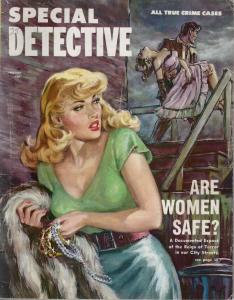
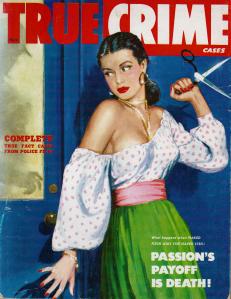
The vintage advertisements for things that seem ridiculous today are fun to look through as well. There is a lot of potential growth as far as investment potential in these magazines. Whereas comic books from the 1950's can be worth thousands of dollars, these vintage magazines are still at the very bottom of the market with a lot of room for growth as values increase. These are cultural artifacts of another time and place in American history. Mob Rackets, divorce rackets, horse rackets, the woman racket...there were a lot of "rackets" in those days for certain!
7. RELATED ITEMS OF INTEREST:
A great place to also find related items is as
SWEETHEARTSINNER. They sell a variety of crime/detective magazine related products that have great pulp graphics that make great gifts. The offer
pill cases,
necklaces, and
cigarette cases and wallets which make great gifts for the collector of pulp magazines, vintage paperbacks, and kitsch. Here is a
True Police Cigarette case for only $9.99. The blurb reads: "She cut her lover in 8 chunks!" I'm sure you were too busy looking at that sexy butt though!
A great place to buy prints of these vintage detective and crime magazines is at
FRINGEPOP. They offer
high quality prints. Examples of their wares are below.
The have some really
Awesome Detective Magazine prints! They are only $10 each and are the best quality I have seen. These make
cool displays for your wall and are perfect gifts for anyone into this type of art. They also sell a lot of vintage pulp and paperback related cover art prints as well as pinup art with kitschy humor sayings.
8. STORAGE AND CARE FOR YOUR COLLECTION:
Storage of these vintage magazines should be kept in mylar bags of magazine sized poly bags with back boards. Supplies like these can be found on
ebay. I personally recommend
GERBER products. They are by far the best for storing your collection and they look really good too. Comic book stores usually carry their items and also sell magazine sized storage boxes as well.
9. CONDITION:
Buying copies in the best condition is always best. However, because these magazines are scarcer than comic books, vintage paperbacks, and even pulp magazines, this can be a real challenge. Surveying the ebay market for the last ten years has yielded for me the fact that not a lot of copies of these magazines exist anymore. Magazines were more of a throwaway type of things compared to books, comics, and pulps because those items had stories in them compared to articles on current crime happenings and those weren't as easily thrown away because of it. A person might want to read a novel or story again and again but an article not so much. My advice is to make sure that a magazine is complete inside and the cover is as good as can be in terms of creasing and general wear. If you see a magazine you want, buy it! It may not come up again for sale for many years. I have personal experience with this!
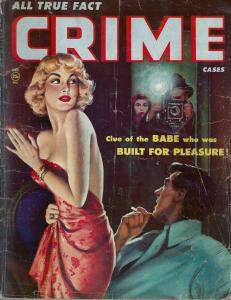
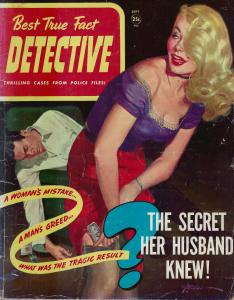
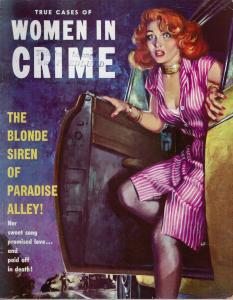
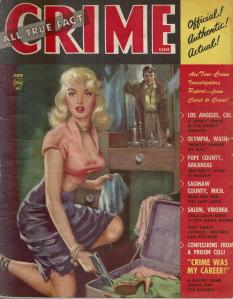
The preceding are all scans of magazines from my personal collection. I hope you enjoyed this brief Guide to Collecting Vintage Detective Magazines and get as much enjoyment out of these magazines as I have.








































